Shark Secrets Revealed
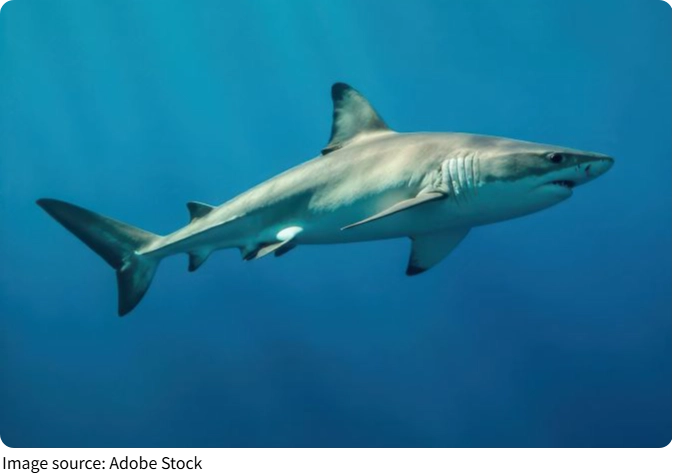
Sharks are among the few animals that still frighten humans today. The threat of shark attacks remains present. A few days ago, sharks repeatedly attacked people in New York's Long Island waters.
When drones investigated, they discovered 50 sharks swimming near the shore. However, the American Discovery Channel has spent 35 years telling one fact: the threat humans pose to sharks far exceeds the threat sharks pose to humans.
Over 500 Shark Species in the Ocean
CNN reported on July 23 that this year marks the 35th annual "Shark Week" summer event. From July 23-29, Discovery Channel invited environmentalist and Hollywood actor Jason Momoa, who plays the superhero in "Aquaman," to host and guide the public to learn more about sharks, engage with the ocean, and understand how these ancient creatures that have survived five mass extinctions are vitally connected to the health of the "blue planet."
There are over 500 species of sharks. Whale sharks are huge, growing as large as school buses, while dwarf lantern sharks are tiny, smaller than a human palm.
But whether it's the "frilled shark" (a living fossil that has hidden in the deep sea for 80 million years) or the longest-living "Greenland shark," they now face a survival crisis.
Due to population explosion, environmental pollution, and various unknown or strange reasons... but mainly due to overfishing for shark fins, according to a study published in Nature in 2021, shark and ray populations declined by 71.1% between 1970-2018, and three-quarters of shark species are now facing extinction.
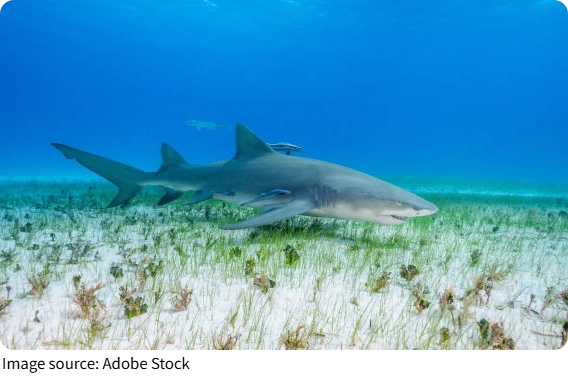
What Good Are Sharks?
According to research, many coral reefs worldwide no longer show traces of sharks, meaning shark numbers have become too low to play their normal role in the ecosystem.
In Australia, tiger sharks are one of the main predators in the ocean. They eat green sea turtles, seabirds, and yellowtail fish, which typically live in areas with seagrass.
When the ecosystem is balanced, seagrass can grow into jungle-like formations, creating a safe habitat for juvenile fish, shrimp and crustacean. Seagrass also absorbs carbon from the atmosphere to grow, which can help ecosystems respond to extreme climate events. When seagrass dies in large quantities, carbon is released from the seabed sediment cycle.
Shark predation indirectly protects the health of ecosystems such as seagrass beds and coral reefs, allowing these habitats to serve as carbon sinks and slow global warming. For example, tiger sharks eat green turtles, limiting green turtle population growth to prevent excessive grazing on seagrass beds. Therefore, the balance between shark and turtle populations is crucial for protecting seagrass beds and surrounding ecosystems. This indirectly helps slow the process of climate change.
A shark's natural death can also contribute a final effort to marine ecology, just as whales have "whale falls," sharks have "shark falls." Scientists once observed the bodies of a whale shark and several large rays lying on the seabed 1,200 meters deep in Angolan waters, providing food for deep-sea "community" residents.
Older Than Trees and Dinosaurs
Katharine Macdonoald, a marine biologist at the University of Miami's Rosenstiel School of Marine, Atmospheric, and Earth Science, says that sharks existed before Pangea (a single continent that existed about 250 million years ago) broke apart.
Scientists believe the earliest sharks appeared about 450 million years ago. This was roughly when plants on Earth could "stand up" and grow tall.
This means these creatures appeared at least 90 million years before trees and 190 million years before dinosaurs.
Sharks Survived Five Mass Extinctions
Since the Cambrian explosion, life evolution on Earth has been very difficult, experiencing five mass extinction events affecting the globe.
The first occurred at the end of the Ordovician period about 440 million years ago, when approximately 85% of species perished.
The second occurred during the late Devonian period about 365 million years ago, severely impacting marine life.
The third occurred at the end of the Permian period about 250 million years ago, when an estimated 96% of Earth's species went extinct, including 90% of marine organisms and 70% of terrestrial vertebrates. This was Earth's largest and most severe extinction event.
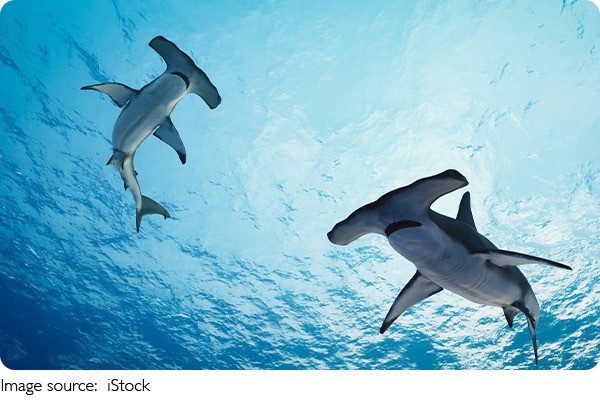
The fourth occurred at the end of the Triassic period about 195 million years ago, with an estimated 76% of species, mainly marine organisms, disappearing.
The fifth occurred at the end of the Cretaceous period, about 65 million years ago. This was Earth's second-largest mass extinction event, with approximately 75–80% of species going extinct. Among the five mass extinctions, this one is the most famous because it ended the era of dinosaurs that had lasted 140 million years.
It was truly a harsh struggle for survival. Sharks survived mass extinctions that even dinosaurs couldn't escape. But they also suffered heavy losses, with only 500 species remaining.
-
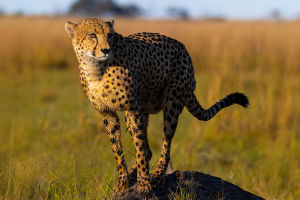 Cheetah Speed SecretsCheetah Speed Secrets: How the World's Fastest Cat Catches Its Prey in Just a Few Seconds!
Cheetah Speed SecretsCheetah Speed Secrets: How the World's Fastest Cat Catches Its Prey in Just a Few Seconds! -
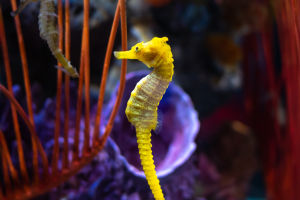 Pregnant Sea DadsPregnant Sea Dads: Why Seahorse Fathers Carry and Care for the Babies Instead of the Mothers?
Pregnant Sea DadsPregnant Sea Dads: Why Seahorse Fathers Carry and Care for the Babies Instead of the Mothers? -
 Fly, Dive, WinHow Do Puffins Catch 62 Fish in One Go? Discover the Arctic's Most Adorable Hunting Genius!
Fly, Dive, WinHow Do Puffins Catch 62 Fish in One Go? Discover the Arctic's Most Adorable Hunting Genius!